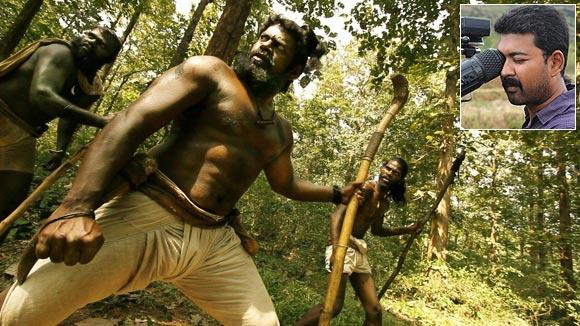
R Siddharth shot the first digital film in India, Kamal Haasan's Mumbai Express. Unfortunately, the film did not impress too many people. He went on to shoot Kamal Haasan's Nala Damayanthi and the commercially successful Yaaradi Nee Mohini.
When the stills of his latest film, Vasanthabalan's Aravaan came out, everybody wanted to know who shot the film.
With Aravaan, he has been elevated to a higher league.
Here, Siddharth talks about what he had to go through to shoot Aravaan.
What was your first reaction when Aravaan was offered to you by Vasanthabalan?
I just jumped at it. Vasanthabalan said he was going to make a film based on a short story from Ventakesan's Kaval Kottam, and the story is set in 18th century Madurai. In a period film, there is a lot of scope for photography.
Vasanthabalan and I know each other quite well though we had not worked together before.
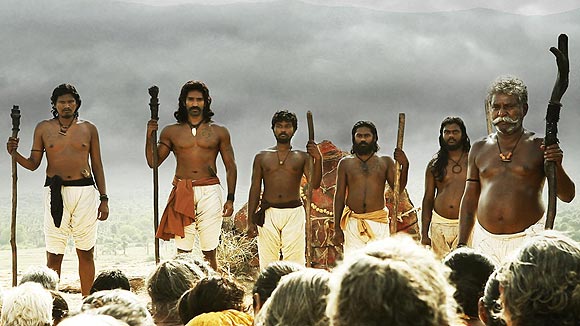
From the way his earlier films were shot, did you expect that a Vasanthabalan film would be a challenge for a cinematographer?
His earlier films dealt mostly with human emotions and mainly sorrow, pain, etc. But when he told me his next was going to be a period film, I knew that he was jumping genres and trying to explore new things.
A cinematographer can contribute a lot in a period film. I knew a film like Aravaan had to be visually stunning.
Did you read Kaaval Kottam before shooting the film?
I am not that well versed in Tamil. What I did was I started planning in my mind. I started working from the point where Vasanthabalan told me how he wanted the film to look.
What sort of planning did you do?
First thing I decided was that we were going to shoot the film in digital format and the reason for that was we had to shoot extensive footage. In a period film, you have to shoot everything extensively.
Nobody has shot a period film in digital format, so we thought why not try it? And, we had hundreds of people acting who had not faced a camera before. That means we had to shoot a lot of footage.
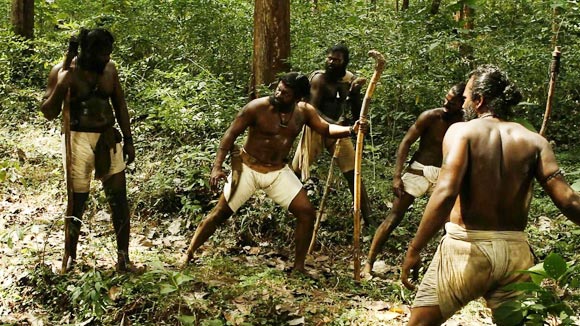
The stills of the film look like you've given a sepia tone to the film. Why?
Actually, the film is shot in four locales. The first half of the film happens in a dry, arid, tree-less and greenery-less location. We shot that part in an interior area near Madurai where civilisation has not reached yet. Since Vasanthabalan wanted a look that depicts hot, dry, barren land, we chose that particular tone.
When the film goes into flashback, the film doesn't have a dry and barren look. It happens thousands of kilometres away in an area that has greenery, huge trees, water, forest, etc. It is a total contrast to the first half. This part is visually alluring.
Which of these looks was more challenging to shoot?
Both were shot with the same kind of dedication and sincerity. But when you shoot in a very dry, hot area, the climate drains you. We shot in a village near Madurai in March-April when it was really, really hot. By evening, you are almost dead of exhaustion.
But when we shot in Courtallam and the forests of Kerala, the weather was cool. So the difference was in the climate; our approach was the same in both the conditions.
What was the first shot that you did of Aravaan?
The first shot was of balls of clay, and Pasupthay's hand comes and breaks the clay and out come jewels!
I say, it's symbolic; like a treasure will come out of this film. The first shots were shot in the Achankoil forests in Kerala.
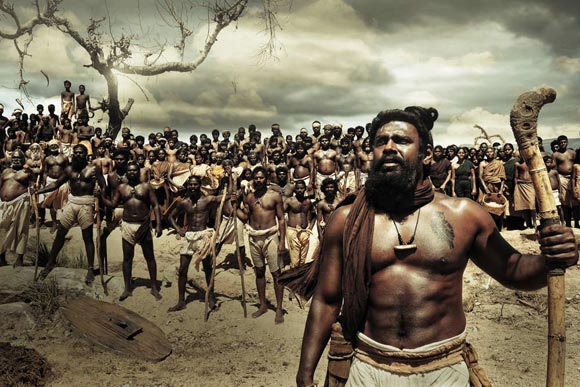
How tough was it to find a location that is untouched by modern times?
It was very tough. It was tough to locate a place where there were no electric wires or mobile towers or concrete structures or tarred roads. I roamed around for four months to find this place. Finally, we identified four locations: one in this no-man's land in Madurai, then at Courtallam, Hogenakkal in Karnataka, and forest areas in Kerala and Andhra Pradesh.
We stayed in Madurai and it took us one hour to travel to this village every day.
What was the most difficult thing to shoot?
Nothing was tough to shoot. What was tough was the climate and the travel to the interiors every day. That was exhausting.
Would you say Aravaan was the most exciting projects of your career?
It is the turning point in my career.
It was very challenging to work with Vasanthabalan at close quarters. On the sets, I was almost like an associate director trying to be near him all the time to see how he worked.
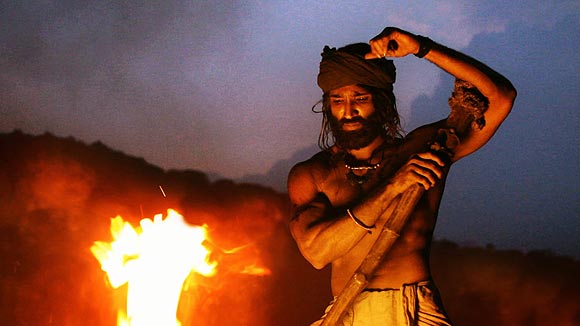
How did you feel once you finished the film?
The feeling was appa..! I was also scared because sometimes the director wants to go back and can a few more shots. Only after Vasanathabalan showed me the rough cut did I feel the work was over. We also felt it had come out well.
What was Vasanthabalan's reaction to your work?
Right from day one, he was happy and appreciative. He was very positive about what I had done. There was a lot of give and take on how the film had to look.
Are you looking forward to the reactions of senior cinematographers?
After the trailer was out, I spoke to Santosh Sivan. He had seen the trailer and was very eager to see the full film as he had just shot a period film on Vasco da Gama.
I am super excited about Aravaan and not because I am the cinematographer; it is an interesting genre in Tamil. I am curious to know how people are going to react to it.
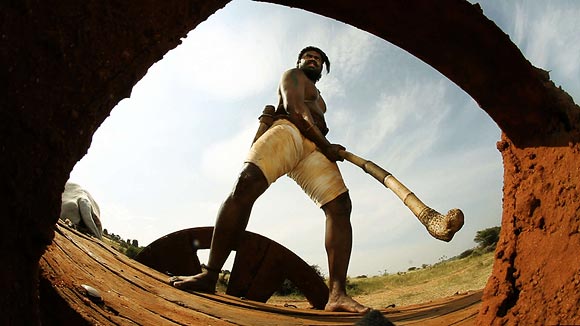
You started your career as an assistant with Govind Nihalani in Hazar Chaurasi Ki Maa. How did you get to work in the film?
After I passed out of FTII (Film and Television Institute of India), Chennai in 1997, many people told me to go to Mumbai and work as I knew Hindi. I got Govind Nihalani's address and wrote to him saying that I wanted to work with him. He replied saying he couldn't pay me, but if I had a place to stay in Mumbai, I could assist him in his next film.
I was excited. I arranged a place to stay in Mumbai. Only when I went to the location did I come to know that the film was Hazaar Chaurasi Ki Maa. I saw Jnanpith award winner Mahashweta Devi (on whose book the film is based) on the first day on the sets. The actors were Jaya Bachchan and Nandita Das and I was assisting a legend like Govind Nihalani.
It was a small budget film and we finished it in 40 days. Working with legends like Nihalani, Kamal Haasan, etc has been an enriching experience as I have learnt a lot from them.